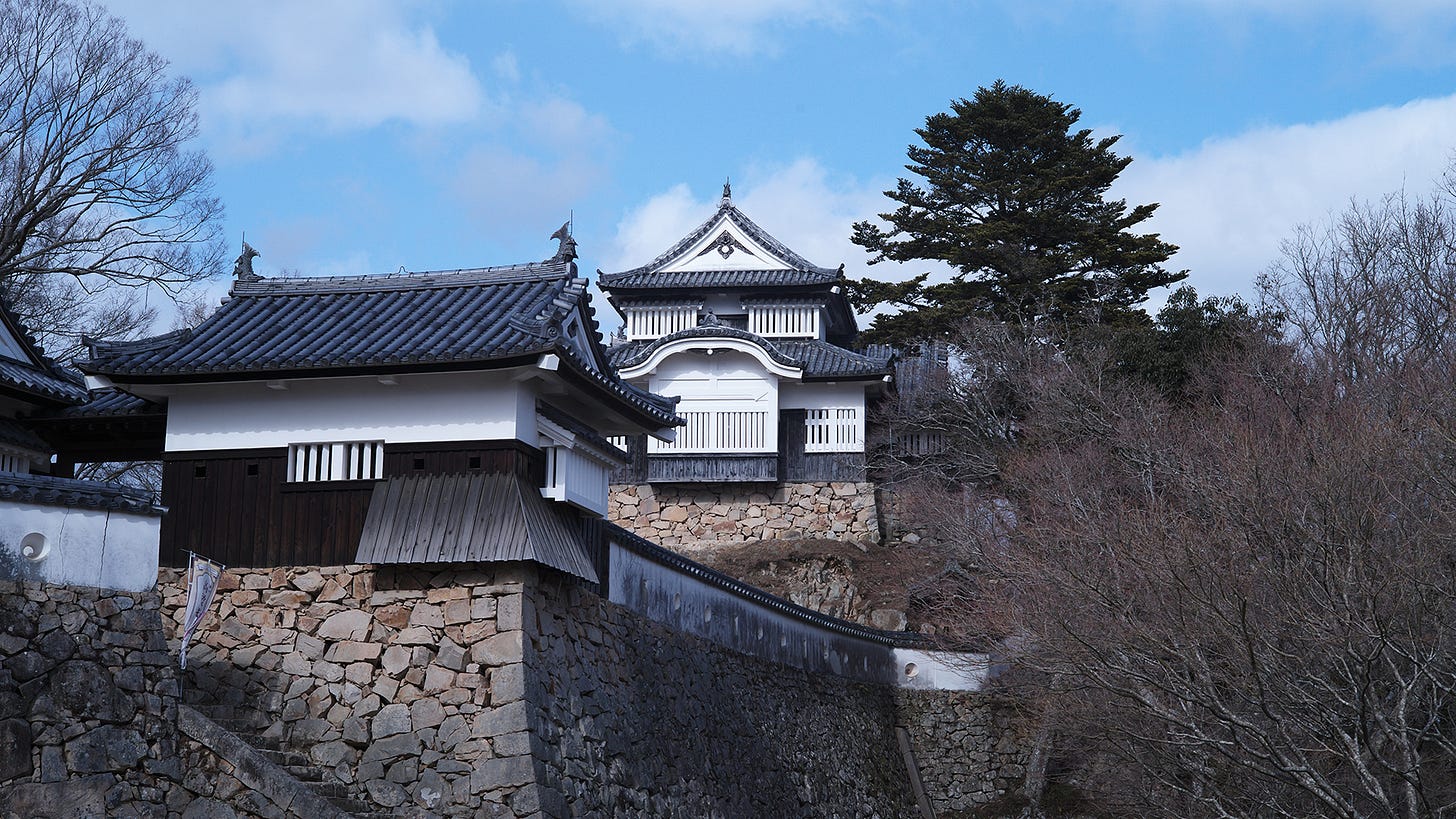Japan’s Secret Mountain Town and its Castle Above the Clouds
Bitchu Matsuyama Castle and the Forgotten Genius Yamada Hokoku
Today I’m visiting Takahashi (高梁市), a small town tucked deep in the mountains of Okayama Prefecture. Hardly known even to most Japanese, it’s been on my wish list for two reasons. First, it’s home to Japan’s most beautiful castle perched on a mountaintop. Second, it’s the birthplace of a remarkable historical figure whose contributions remain unjustly overlooked.
Historically known as Bitchu Matsuyama (備中松山藩), this region was strategically crucial from the 13th century onward, with warriors continuously battling for dominance. Located at the crossroads of vital north-south and east-west trade routes, it became part of Okayama Prefecture in 1871 during the Meiji Restoration. Before that, the region was divided into territories known as Mimasaka (美作), Bitchu (備中), Bizen (備前), and parts of Bingo (備後), each with distinct characteristics. Bitchu, stretching north to south, occupied rugged mountainous terrain connecting the Seto Inland Sea to Tottori and Shimane along the Japan Sea coast.
Once numbering around 170 nationwide, only 12 original castles from Japan’s Edo period (1603-1868) survive today. Most were destroyed in wars toward the end of the Edo period, intentionally dismantled by the Meiji government, or burned in WWII air raids. Most surviving castles stand on easily accessible flatlands and are now popular tourist destinations. However, Bitchu Matsuyama Castle in Takahashi uniquely retains its original main keep (tenshu, 天守閣) atop Mount Gagyu (臥牛山) at an elevation of 480 meters—the highest mountain castle still standing in Japan.
By contrast, the better-known Matsuyama Castle in Ehime Prefecture, while also atop a hill, was rebuilt relatively recently in 1852 and equipped with modern amenities like a ropeway. In stark contrast, visiting Bitchu Matsuyama Castle requires either a challenging 90-minute hike from town or a drive halfway up the mountain, followed by a strenuous walk. No ropeways or tourist-friendly infrastructure exist here, preserving its authentic, untouched atmosphere.
Why has such a strikingly beautiful castle remained undeveloped for tourism? The answer lies in historical events from Japan’s turbulent 19th-century transition from feudalism to the modern state. After the Meiji Restoration in 1868, castles symbolized the outdated feudal regime, prompting their widespread demolition. Fortunately, Bitchu Matsuyama Castle’s remote mountain location meant dismantling it was prohibitively difficult, leading to its preservation. Thus, the castle has remained largely untouched since its renovation in 1683, revered by history enthusiasts for its stunning, unchanged appearance—a sight breathtaking even to someone like myself, who has explored castles all over Japan.
My second motivation for visiting Takahashi is researching Yamada Hokoku (山田方谷, 1805-1877), an exceptional Confucian scholar who profoundly shaped local history. Born in Takahashi, Hokoku showed genius from the age of four, gaining recognition as he pursued studies in Kyoto and Edo, where he earned the respect of influential scholars. Later, he served as the trusted advisor to the feudal lord of Bitchu Matsuyama, greatly influencing education and local governance.
In the mid-1800s, the Bitchu Matsuyama domain faced severe financial crisis, burdened by a staggering debt equivalent to approximately 30 billion yen ($300 million USD today). Annual revenue was entirely consumed by debt repayment, leaving the domain hopelessly trapped. To address this, the lord appointed Hokoku—deeply trusted by local people—as chief financial officer, granting him absolute authority. Hokoku initiated comprehensive financial reforms, repaying the enormous debt within seven years while simultaneously accumulating a surplus equal to the original debt amount. His astonishing achievement became legendary throughout Japan, impressing even the central Tokugawa Shogunate, which subsequently appointed the domain’s lord, Itakura Katsukiyo (板倉勝静), to key positions. Hokoku also served as an advisor during this tumultuous period.
Yet despite numerous prestigious invitations after the Meiji government’s formation, Hokoku refused all offers, returning home to dedicate himself fully to educating the next generation. Astonishingly, Yamada Hokoku remains entirely absent from standard Japanese history textbooks; thus, most Japanese people have never heard of him or his extraordinary accomplishments. However, within Takahashi, his legacy is revered, visibly commemorated throughout the town. During this visit, I even had the privilege of speaking directly with his descendants, deepening my respect for Hokoku’s lifelong devotion to his community.
In our era of globalized mass tourism, true glimpses of old Japan have grown rare. But hidden gems like Takahashi, off the beaten path and untouched by commercialization, preserve a genuine traditional charm. The locals remain kind and welcoming, influenced by Hokoku’s enduring legacy. Moreover, the town’s cuisine—featuring soba noodles and mochi rice cakes made with pure water from the Takahashi River—is truly exceptional.
For travelers fascinated by Japanese history and castles, Takahashi is an unforgettable, authentic destination, representing a rapidly disappearing side of Japan worth discovering.



